Understanding the Life Cycle of Nits and Lice
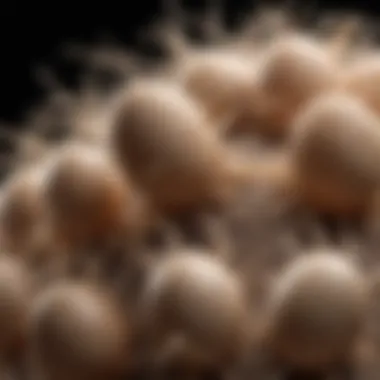
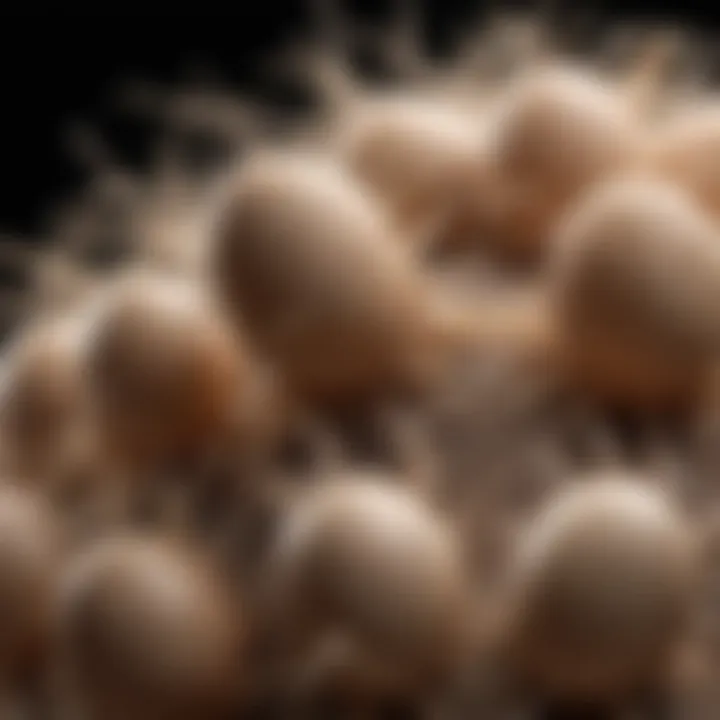
Intro
The intricate world of nits and lice is often overlooked, yet it holds significant implications for human health and society. Many people regard these parasites as mere nuisances, but they are fascinating organisms that undergo complex biological changes throughout their life cycle. By exploring the processes from egg stage to adult, the relationship between lice, their hosts, and their environments becomes clearer.
Summary of Objectives
This article strives to unfold the complete lifecycle of nits and lice, touching upon key points like:
- Developmental stages of nits and lice
- Their reproductive habits
- Effective prevention methods
- Implications for public health and community perceptions
Through an organized approach, I hope to delve into the biology that governs these mighty little parasites and how understanding them might mitigate the issues they bring.
Importance of the Research
The study of lice and their life cycles is crucial for several reasons:
- Health Risks: Lice infestations not only cause discomfort but can also lead to secondary infections from scratching. Understanding lice's habits and biology aids in reducing these health risks.
- Social Perceptions: Lice carry a stigma that can lead to isolation, particularly in school settings. Grasping their life cycle increases awareness, encouraging more empathetic responses to those affected.
- Effective Treatment: Identifying the precise stages of the lice life cycle assists in implementing more effective treatment protocols and preventive measures.
Preface to Nits and Lice
Understanding nits and lice is not just for the squeamish or those dealing with an infestation. It's essential knowledge for anyone interested in human health, biology, or public safety. These tiny parasites have unique adaptations that enable them to thrive on their human hosts, making their life cycle a fascinating subject worthy of exploration.
Nits, the eggs laid by lice, are often mistaken for dandruff or dirt, making them easy to overlook. This misidentification can lead to a delay in treatment, allowing the infestation to worsen. Nits are firmly attached to the hair shaft, designed to endure environmental challenges while developing into adult lice—an important factor in understanding their life cycle.
Lice, on the other hand, exhibit different forms, primarily the adult stage, which is most often recognized. Adult lice are not just bothersome; they also play a crucial role in the reproductive cycle, contributing to the persistence of an infestation. Understanding their habits, behaviors, and biology is vital because it equips us with the knowledge needed to manage and prevent infestations effectively.
"A thorough comprehension of these parasites helps in developing effective strategies for prevention and control, thus minimizing the impact of lice on individuals and society as a whole."
The relevance of studying nits and lice extends beyond just their biological significance; it also intersects with health implications, particularly in terms of physical discomfort and psychological effects stemming from infestations. Addressing these issues is crucial, especially in communal settings like schools, where outbreaks can occur easily.
In summary, the examination of nits and lice is a multifaceted topic. From understanding their lifecycle and behavioral patterns to recognizing their effects on human health, there's much to unpack. For those working in education or healthcare, this knowledge is invaluable, guiding approaches to prevention and intervention effectively. So, let’s dive deeper into each stage of their life cycle, unraveling the complexities that these tiny yet potent parasites bring to our lives.
Definition and Classification
Understanding the definition and classification of nits and lice is fundamental to grasping their life cycle and the various impacts they can have. This section aims to clarify the different species of lice and their unique characteristics, as well as the distinct stages in their development. Such knowledge is essential not merely for academic purposes but also for practical applications in addressing lice infestations.
Overview of Lice Species
Lice are parasitic insects that belong to the order Phthiraptera. They are generally categorized into two main groups: chewing lice and sucking lice. Chewing lice, known scientifically as Mallophaga, primarily infest birds and tend to feed on feathers and skin debris, whereas sucking lice, within the Anoplura suborder, attach themselves to hosts and consume blood.
Among the sucking lice, there are a few notable species that impact humans:
- Pediculus humanus capitis: The head louse, which is a common nuisance, is found on the scalp and feeds on blood.
- Pediculus humanus corporis: The body louse, primarily residing in clothing, can signal unsanitary conditions and is responsible for spreading diseases like typhus.
- Pthirus pubis: Commonly known as the crab louse, this species prefers coarse hair areas such as the pubic region.
The understanding of these species is crucial for targeted treatments and preventive measures. Identifying which type of louse is present can significantly influence the approach taken to manage infestations effectively.
Distinction Between Nits and Adult Lice
Nits are the eggs laid by adult female lice and differ markedly from the adult forms.
- Nits are oval-shaped, very small (about the size of a pinhead), and often appear white or yellowish. They adhere to the base of hair shafts close to the scalp, making them challenging to detect. These eggs are glued firmly in place and are impervious to many treatments, making the detection and removal process tedious.
- Adult lice, on the other hand, are more prominent and can reach a size of up to 2-3 mm. They are grayish-white to brownish in color and are mobile, which makes them easier to spot than nits. An adult louse requires a blood meal several times a day to survive and reproduce.
"Understanding the differences between nits and adult lice is key to effectively addressing an infestation. Nits are not merely unhatched lice but represent a crucial phase in the lice’s life cycle that can perpetuate the cycle of infestation."
In summary, recognizing the distinction between nits and their adult counterparts is essential. This knowledge aids in both awareness and effective intervention strategies, allowing for a more comprehensive understanding of lice management in both clinical and household settings. This classification not only enhances the reader's knowledge but also prepares them for the next phases of the life cycle that will be explored further in upcoming sections.
Life Cycle Stages
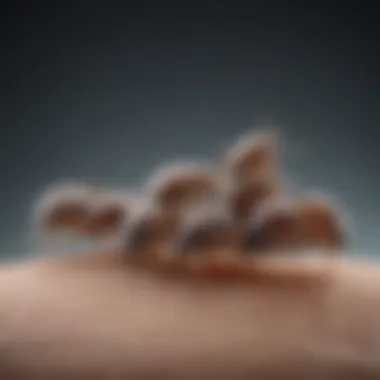
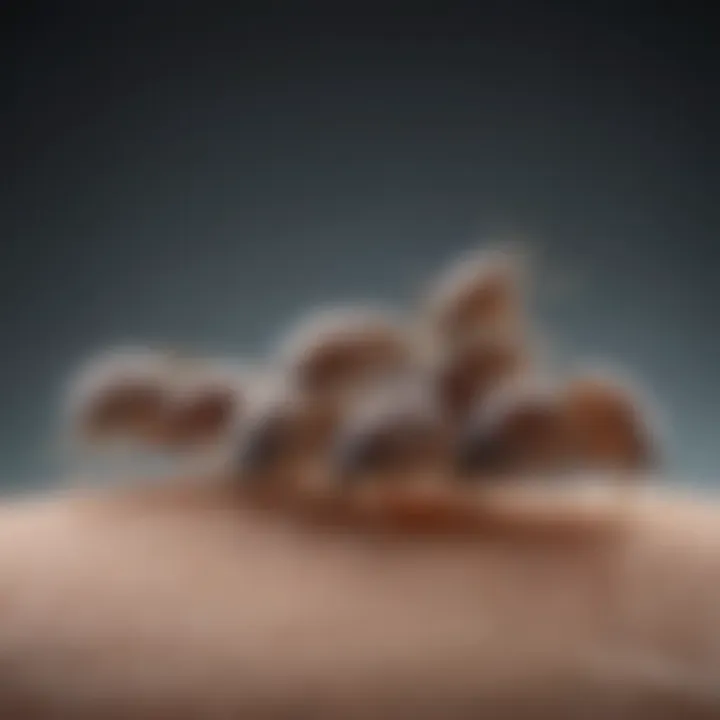
The life cycle stages of nits and lice are not just significant in understanding how these parasites thrive but also in appreciating their biological complexities. Each stage, from nit to nymph to adult, plays a critical role in the reproduction and survival of these pests. Comprehending these stages allows for better awareness of lice behavior and aids in developing effective control measures. The cyclical nature of their life stages means that addressing one phase may affect the entire life cycle, providing an essential foundation for preventive strategies.
Egg Stage (Nit)
Description of the Egg Structure
The structure of a nit, or louse egg, is specifically designed for durability. Nits are oval-shaped, approximately the size of a pinhead, and are often cemented to the base of hair shafts near the scalp. This attachment provides them with a secure environment, crucial for their survival. The hard outer shell is another critical feature, as it protects the developing embryo from various environmental factors. Because of these characteristics, the nit stage is a particularly problematic phase in the life cycle, making eradication efforts more challenging.
Conditions Favoring Egg Development
Nits develop best under warm and humid conditions, which mimic the environment of the human scalp. Optimal temperatures are around 28°C to 30°C, as this range enhances the metabolic rate of the developing embryo. Additionally, humidity levels of 70-80% contribute to a successful hatch. When temperatures dip below this range, egg viability decreases significantly. This aspect underscores the importance of maintaining awareness of environmental conditions when considering lice control. Understanding these conditions can guide effective intervention strategies aimed at disrupting the life cycle.
Duration of the Nit Stage
The nit stage lasts about 7 to 10 days before the nymph emerges. This relatively short duration is essential for the continuity of lice infestation, as multiple lice can hatch in a single week. This aligns with the rapid reproductive capabilities of adult lice, emphasizing the importance of timing in control measures. The dilemma arises when one considers that many treatments may not affect nits, allowing them to survive and continue the cycle. Therefore, recognizing the urgency of addressing nits is crucial for effective management of lice infestations.
Nymph Stage
Nymph Characteristics
Nymphs are essentially juvenile lice, resembling smaller versions of adult lice but lacking the ability to reproduce. They undergo three molts before transitioning into the adult stage. Nymphs are typically about 1-2 mm in length, with a lighter coloration than adults, making them somewhat harder to spot. Their mobility and ability to feed on blood soon after hatching contribute significantly to how they establish infestations. Understanding these characteristics can illuminate how quickly nymphs contribute to population growth.
Lifespan of Nymphs
Once hatched, nymphs typically live for about 7 to 10 days before maturing into adults. Despite their short lifespan, nymphs can feed on a host multiple times a day, which plays a critical role in the persistence of infestations. Their brief stage allows for rapid population growth, further complicating control measures. Knowledge of their lifespan offers insights into the urgency necessary for intervention during this transitional phase.
Feeding Behavior
Nymphs have a voracious feeding behavior, which is distinct from that of their predecessors. Like adults, nymphs feed primarily on human blood, which is vital for their growth and development. Their ability to draw blood multiple times per day highlights their role in sustaining the infestation. This characteristic also cements the importance of fostering awareness about how quickly nymphs can contribute to the overall nuisance and complications of lice.
Adult Stage
Adult Lice Morphology
Adult lice are fully developed lice, measuring approximately 2 to 4 mm. They possess six legs designed for gripping hair tightly, which prevents them from being easily dislodged. The body is flat and streamlined, facilitating movement through hair. Their morphology is not just interesting; it impacts how easily they can spread between hosts. Understanding their physical attributes can sharpen tailormade strategies for mitigation.
Reproductive Capabilities
Adult lice are remarkable reproducers, capable of laying around 6 to 10 eggs per day. This prolific nature ensures a quick rebound in lice populations, complicating elimination efforts. Their mating process is relatively straightforward; once a female mates, she can store sperm to fertilize her eggs over an extended period. This feature accentuates the challenges posed by lice infestations, making eradication efforts more daunting than anticipated.
Lifespan and Feeding Patterns
Adult lice can live up to 30 days under optimal conditions. Their feeding pattern requires a blood meal every 3-6 hours, making them highly dependent on the host. This constant cycle of feeding not only sustains the adult's life but also perpetuates the infestation, as it leads to further egg-laying. Recognizing their longevity and feeding habits serves as a reminder that control measures need to be thorough and persistent, addressing all life stages effectively to curb the cycle of lice and nits.
Reproductive Habits
Understanding the reproductive habits of nits and lice is crucial in grasping the overall life cycle of these parasites. Their breeding strategies not only influence their population dynamics but also dictate how effectively they can infest hosts. The process of mating and the subsequent behaviors involved in egg-laying are instrumental in sustaining their existence, making them hidden adversaries in the domain of public health.
Mating Process
The mating process of lice is relatively straightforward yet highly effective. Male lice, which are equipped with specialized appendages, seek out females during a brief window when the latter are ready to mate. This often occurs shortly after the females have molted into adulthood, making them especially vulnerable. Following a successful courtship, the male lice grasp the female, and copulation occurs. It's important to note that once mated, female lice have the capability to produce eggs quickly, typically within days of mating.
This rapid breeding cycle is critical for lice survival as it ensures a continuous replenishment of their population. Should environmental conditions remain favorable, a single female could eventually lay hundreds of eggs during her lifespan. This reproductive efficiency grants lice an adaptive advantage, making infestations hard to contain.
Egg Laying Behavior
Frequency and Quantity of Eggs
The frequency and quantity of eggs laid by female lice significantly impact the potential for outbreaks. A healthy female louse can lay between 50 to 150 eggs, also known as nits, in her lifetime. This prolific egg-laying behavior allows for a swift, exponential increase in the population if left unchecked. Understanding this pattern is vital for developing effective control and prevention strategies.
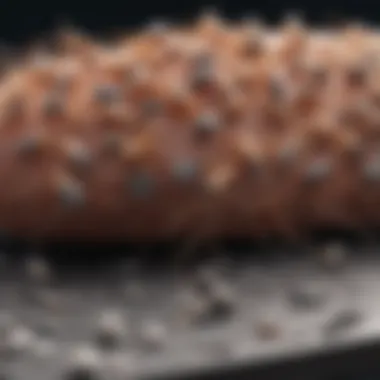
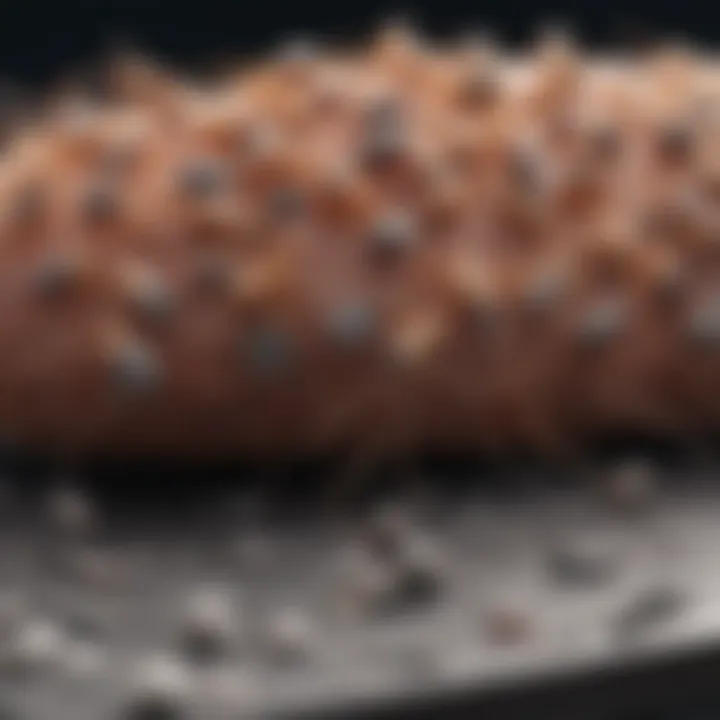
Interestingly, the timing of egg-laying is often synchronized with key environmental factors, like temperature and host availability. This adaptability means that lice can optimize their reproductive output to align with peak times of human interaction, enhancing their chances of survival.
Egg Adhesion Mechanisms
Egg adhesion mechanisms represent another fascinating aspect of lice reproductive habits. The nits are not just casually laid; females utilize a strong, adhesive substance to firmly attach the eggs to hair shafts. This unique feature is vital, as it prevents the eggs from falling off and ensures they remain close to the host, where warmth provides an ideal incubator for the developing larvae. Without this sticky bonding, many nits could easily get dislodged, reducing the chances of successfully maturing into nymphs and subsequently adults.
The strong adhesion means that removing nits requires careful and often labor-intensive methods to dislodge them from hair strands. This characteristic not only complicates eradication efforts but also underscores the resilience of lice in their struggle for survival in the human ecosystem.
"Lice are more than mere nuisances; their reproductive strategies demonstrate an exceptional adaptability, making them formidable when it comes to establishing populations across diverse environments."
In summary, the reproductive habits of nits and lice form the backbone of their life cycle. Understanding the mating process, egg-laying behaviors, and mechanisms of adhesion provide critical insights into their resilience and potential impact on human health. By comprehending these elements, one can begin to formulate effective strategies for managing and preventing lice infestations.
Environmental Factors Impacting Life Cycle
Temperature and Humidity Requirements
Temperature and humidity are two core elements influencing not just the survival but also the reproduction of lice. These parasites prefer a warm and humid environment to develop efficiently. Optimal temperatures for lice activity range between 28°C to 30°C (82°F to 86°F). At this range, lice can mature quickly, laying eggs and feeding more vigorously on their host.
Conversely, when temperatures drop below this range, lice become sluggish, impacting their ability to reproduce and feed. In conditions lower than 22°C (72°F), the lifecycle slows down, and at extreme cold, lice can die off. Humidity complements temperature; lice require humidity levels of around 50% or higher to avoid desiccation and ensure that their eggs, or nits, adhere wirh sufficient strength to hair shafts.
"Inadequate humidity can lead to lower survival rates of newly hatched nymphs, creating a significant gap in population recovery."
Host Interaction and Infestation Patterns
Lice rely heavily on their hosts, which are primarily humans, for survival and reproduction. Their life cycle is intricately linked with human behavior and social structures—how people interact undoubtedly impacts lice infestation rates. High-contact environments, like schools or daycare centers, are breeding grounds for lice outbreaks. Children tend to share personal items like hats, brushes, or even engage in head-to-head contact during play, facilitating the spread of lice.
Moreover, individual hygiene practices also shape infestation patterns. Those with longer hair may find themselves more susceptible to lice, as it offers more real estate for these parasites to cling onto. In addition, crowded living conditions, regardless of socioeconomic status, can amplify the issue, as lice have easy access to multiple hosts. On the flip side, lower-density living can reduce the rate of transmission.
The adaptability of lice is another noteworthy point. They have evolved to thrive in diverse environments, making them ubiquitous pests across the globe. With their complex life cycles and dependence on human behaviors, lice often become a community problem, necessitating informed and communal approaches to prevention and control.
Health Implications of Lice Infestation
Understanding the health implications of lice infestation is crucial for individuals and communities. Lice can lead to more than just itching—there are numerous consequences associated with their presence. Infestations can have significant physical and psychological effects, along with the potential for disease transmission. This article will delve into these aspects to foster awareness and equip readers with knowledge to combat lice effectively.
Physical and Psychological Effects
Living with lice can take a toll on an individual's physical well-being. The most noticeable effect of a lice infestation is intense itching, triggered by the lice's saliva. This itching can lead to scratching, often resulting in skin irritation or secondary infections. Scratched areas might develop further complications, such as infections from bacteria introduced through broken skin.
On a psychological level, the impact of lice is just as serious. The stigma surrounding lice can be quite harsh, often leading to feelings of shame or embarrassment. Many individuals, especially children, may experience social isolation or bullying due to their condition. Stress and anxiety levels can spike, as concerned individuals worry about their hygiene or the reaction of those around them. The cyclical nature of these effects creates a challenging situation that exacerbates the overall impact of the infestation.
"The social ramifications of lice infestation can be as debilitating as the physical symptoms themselves."
Transmission of Disease
While lice are primarily known for causing annoyance, they can also be vectors for certain diseases. The most common types of lice affecting humans are head lice, body lice, and pubic lice. Body lice, in particular, have been linked to the transmission of diseases such as typhus, relapsing fever, and trench fever. These conditions are not just a nuisance; they pose significant health risks in areas where hygiene is compromised.
Head lice, on the other hand, are not known to transmit diseases directly but can still impact public health by fostering environments where other infectious diseases may thrive. Understanding the potential for disease transmission is essential, especially in community settings where infestations can spread rapidly.
Considering these health implications, it's clear that a lice infestation warrants swift and effective intervention. Addressing both the physical and psychological effects while being aware of the implications for disease transmission will contribute to better outcomes for affected individuals.
Prevention and Control Strategies
Understanding the prevention and control strategies for lice and nits is pivotal for various reasons. First, it can help bring down the rate of lice infestations, which can affect both physical comfort and emotional well-being. Moreover, these strategies can promote better hygiene practices in community settings, particularly in schools where the risk of spread is significant. Finally, awareness and education empower individuals to take proactive steps in combating this annoyance.
Personal Hygiene and Education
Personal hygiene plays a key role in preventing lice infestations. Individuals who maintain clean hair and regular grooming routines tend to reduce the chances of lice thriving on their scalps. Basic steps include regular hair washing with suitable shampoos and minimizing the sharing of personal items such as brushes, hats, and pillows. Education about lice is also crucial; learning how lice spread can help mitigate the risks.
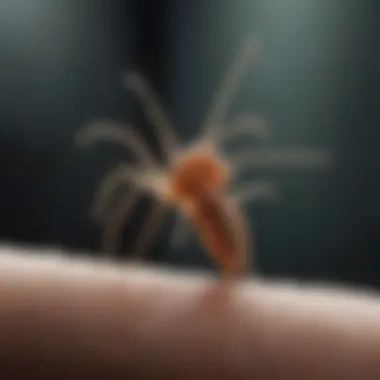
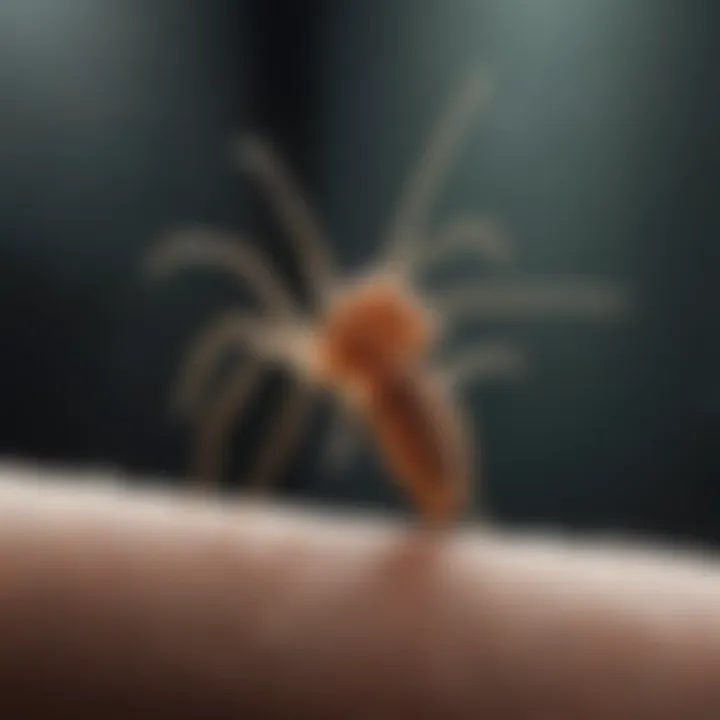
Informing schools and communities about the importance of hygiene can lead to organized campaigns promoting cleanliness. Educational programs tailored toward parents and children can foster a better understanding of lice life cycles, thereby encouraging appropriate reactions when an infestation is discovered.
Chemical Treatments
Chemical treatments are often perceived as a quick fix to lice problems. However, understanding the nuances involved in these treatments can make all the difference.
Types of Pesticides
When it comes to treatment, various types of pesticides are employed to eliminate lice and nits. Organophosphates, for instance, used to be predominant in lice treatments before they were restricted due to safety concerns. More common today are pyrethrins and permethrin-based products. These pesticides work on the nervous systems of lice, leading to their rapid death. Many users appreciate their convenience and effectiveness, which makes them popular choices within homes dealing with infestations.
The unique aspect here is that while these pesticides can be effective, over-reliance on them has raised concerns about resistance among lice. If not properly managed, this resistance can lead to decreased effectiveness of treatments over time.
Effectiveness and Resistance
The effectiveness of chemical treatments varies, and this is where resistance becomes a significant issue. Continued usage of the same pesticides can lead lice to develop resilience, which makes it harder to eliminate them in subsequent infestations. A key characteristic of the current landscape is the emergence of ‘super lice’ that show resistance to common treatments.
It is therefore critical to rotate products or consider alternative solutions to maintain their effectiveness. Additionally, combining treatments—using chemical methods alongside manual removal techniques—can prove more effective in managing lice infestations efficiently.
Non-Chemical Control Methods
For those who prefer a non-chemical approach, various methods can effectively combat lice.
Manual Removal Techniques
Manual removal techniques involve using a fine-toothed comb to extract lice and nits from the hair. This method can be painstaking but is very effective if done correctly. The act of combing not only removes adult lice but also clears out nits, reducing the chance of re-infestation. One of the key advantages is that it involves no chemicals, making it safer for families, especially those with younger children.
However, this method requires time and patience. One must be diligent to thoroughly comb the hair multiple times a week until no lice or nits are found.
Environmental Management
Environmental management refers to minimizing the risk of lice infestations by controlling the surroundings. Lice do not survive long without a human host, so managing the environment can be quite effective. Washing bed linens, combs, and brushes in hot water can help eliminate any existing lice or nits lurking in those spaces.
A unique feature of this strategy is its sustainability. Following proper cleaning routines and guidelines diminishes the chance of outbreaks, as cleanliness creates an unfavorable environment for lice. As advantageous as it sounds, it does rely heavily on consistent effort from all family members to work optimally.
"Prevention is better than cure." When it comes to lice, the old adage holds particularly true; implementing effective strategies well before an infestation occurs can save plenty of headaches down the road.
Ending
In addition, recognizing the health implications tied to lice infestations underscores the seriousness of the issue. Beyond the discomfort caused by bites, lice are often associated with secondary infections, anxiety, and social stigma. Through awareness, we can mitigate the psychological burden that these infestations can impose, particularly in vulnerable populations like children.
Prevention and control strategies cannot be overlooked. By adopting sound hygiene practices and understanding the limitations of various treatments—whether they be chemical or non-chemical—communities can foster healthier environments. This is especially critical in settings like schools, where the risk of transmission is higher.
“An ounce of prevention is worth a pound of cure.” This aphorism rings especially true in the context of lice infestations, reminding us that understanding the life cycle can serve as the first line of defense.
In summation, the journey from understanding the life cycle stages of lice to implementing effective control measures is a pathway toward better public health outcomes. It’s about arming oneself with knowledge and taking proactive steps in the face of what can seem like a daunting problem.
Importance of References
References provide a roadmap to the existing body of knowledge. In studying lice and nits, it is crucial to include data from multiple reputable sources to ensure a balanced perspective. Peer-reviewed articles offer insights into the latest research findings, while textbooks can provide foundational information about the biology of these parasites. Websites like Wikipedia offer accessible overviews, while more specialized platforms such as Britannica supply depth that is often necessary for academic discussion.
Key Elements to Consider
- Credibility: Using references from established institutions or recognized experts in parasitology fortifies the argument being made.
- Relevance: It's essential that the cited works are directly related to the specific aspects of lice and nits that are being examined.
- Diversity: Incorporating different types of references, such as academic articles, books, and online resources, caters to varying reader preferences and learning styles.
Benefits of Comprehensive Referencing
- Validation of Claims: Every claim or fact regarding the life cycle of lice should have supporting evidence. This is crucial, especially when addressing health implications or control strategies.
- Guiding Future Research: Detailed references can point towards gaps in current research that future studies can pursue, generating further understanding in the field.
- Facilitating Trust: When readers see extensive and expert-backed references, their confidence in the material increases, making them more likely to accept the information presented.
Considerations About References
While references enhance the article's reliability, it is also essential to approach them critically. Not all sources are created equal; some may harbor biases or outdated information. Therefore, as one reviews material on nits and lice, it is critical to check the publication date and source credibility.
"A well-researched article is like a well-crafted garment; it needs quality fabric - in this case, references - to hold its form."
Lastly, references should be formatted properly in accordance with citation styles suitable for the audience. This ensures ease of access for those who wish to look further into the presented material.















